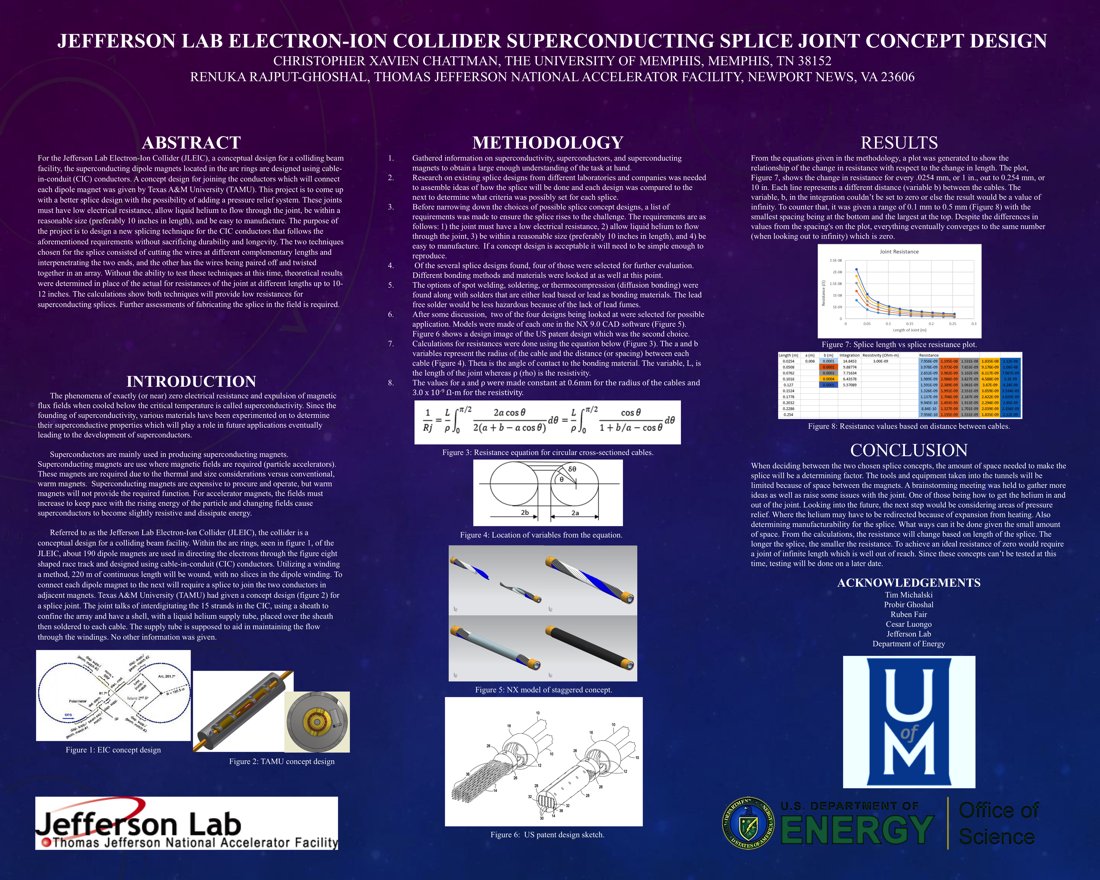Undergraduate Research at Jefferson Lab
JLEIC Splice Joint Concept Design
Student: Christopher X. Chattman
School: The University of Memphis
Mentored By: Renuka Rajput-Ghoshal
For the Jefferson Lab Electron-Ion Collider (JLEIC), a conceptual design for a colliding beam facility, the superconducting dipole magnets located in the arc rings are designed using cable-in-conduit (CIC) conductors. A concept design for joining the conductors which will connect each dipole magnet was given by Texas A&M University (TAMU). This project is to come up with a better splice design with the possibility of adding a pressure relief system. These joints must have low electrical resistance, allow liquid helium to flow through the joint, be within a reasonable size (preferably 10 inches in length), and be easy to manufacture. The purpose of the project is to design a new splicing technique for the CIC conductors that follows the aforementioned requirements without sacrificing durability and longevity. The two techniques chosen for the splice consisted of cutting the wires at different complementary lengths and interpenetrating the two ends, and the other has the wires being paired off and twisted together in an array. Without the ability to test these techniques at this time, theoretical results were determined in place of the actual for resistances of the joint at different lengths up to 10 inches. The calculations show both techniques will provide low resistances for superconducting splices. Further assessments of fabricating the splice in the field is required.

Citation and linking information
For questions about this page, please contact Steve Gagnon.
